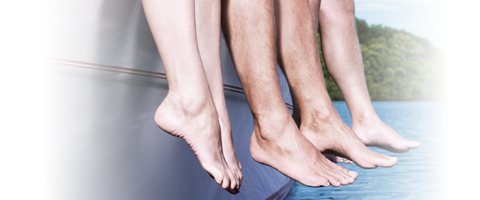Varicose veins are a common disease
Here you will find answers to your questions on varicose veins

Frequently asked questions
What are the symptoms of varicose veins?
Not counting the cosmetic aspects of the tortuous veins bulging beneath the skin, many people initially do not have any symptoms at all.
The most common symptoms are pain, feelings of tension or heaviness in the legs, an unpleasant sensation of warmth, night cramps in the calves, and itching or tingling in the legs. Pooling of blood leads to the accumulation of fluid in the tissues of the lower legs and causes them to swell, especially around the ankles (oedema). These symptoms tend to be worse in the evenings and during warm weather.
As a rule, these symptoms caused by varicose veins are not exclusive to the condition, but may also be the result of other diseases.
Complications in later stages include thrombophlebitis and chronic inflammation of the skin. The latter may cause the skin to harden and lead to brownish discolouration or a loss of pigment, especially around the ankles and on the lower leg. Without the right treatment, venous leg ulcers and deep vein thrombosis occur in the worst cases.
